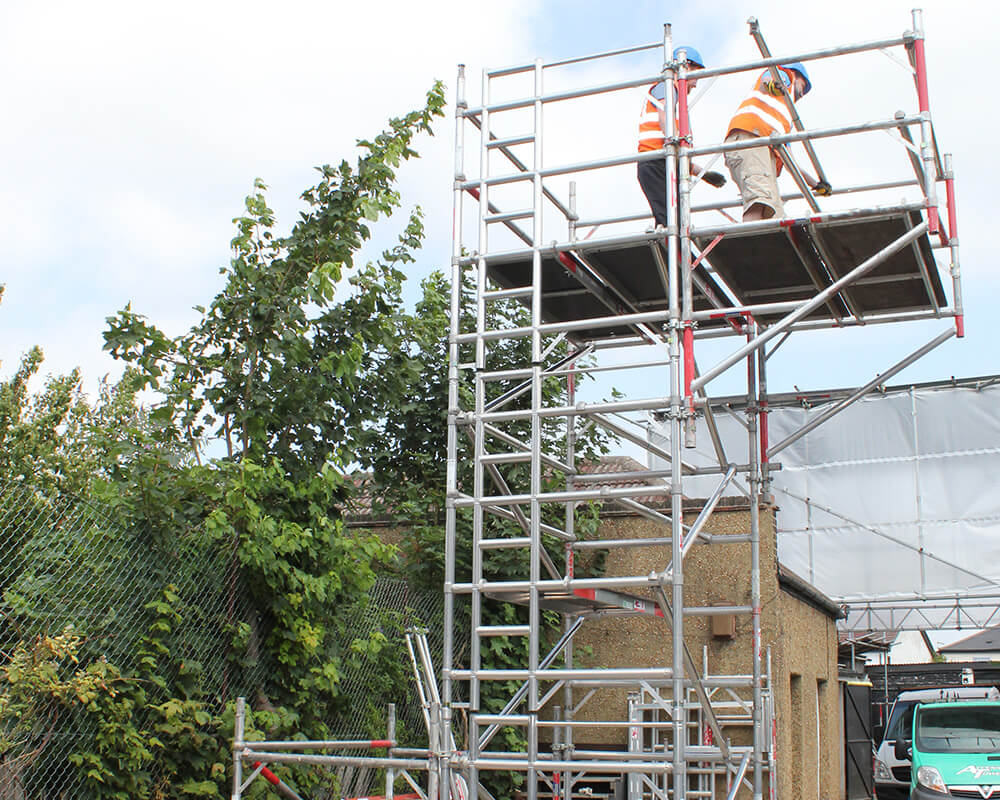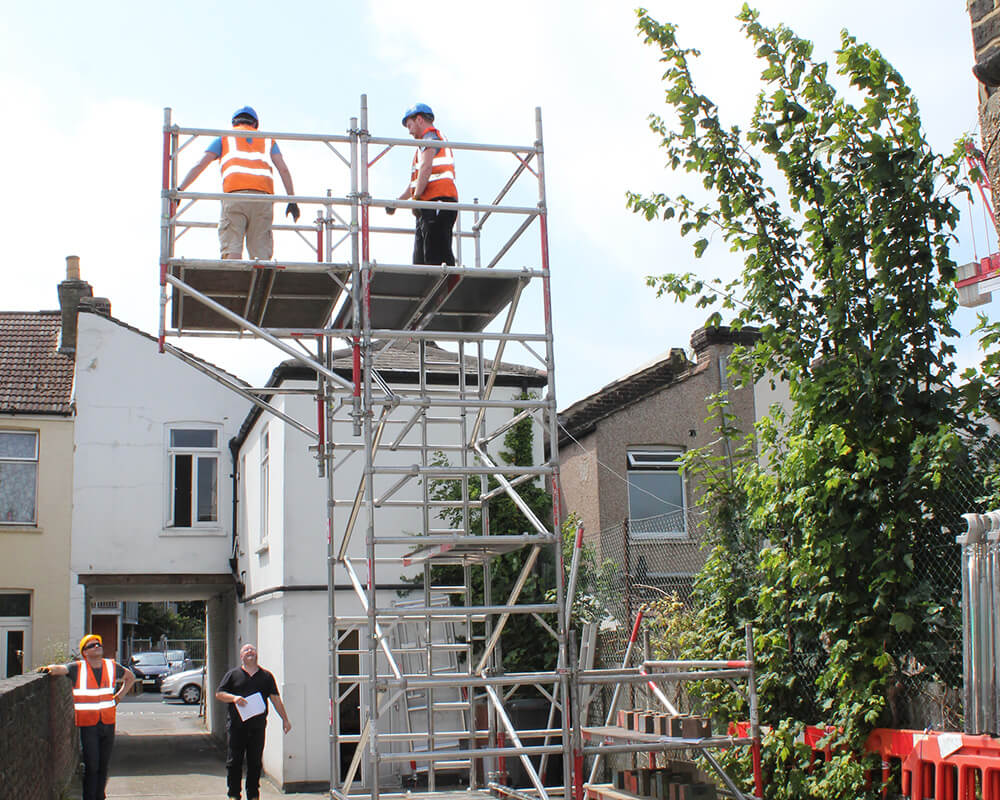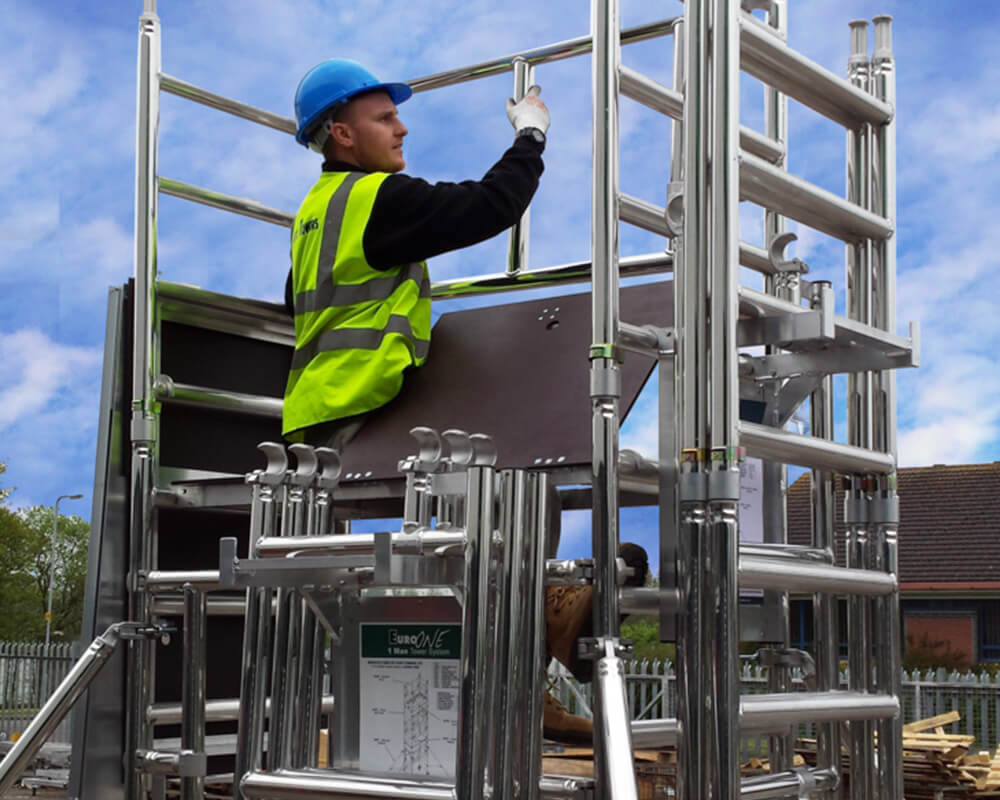Efficient Scaffold Hire: Maximising Your Project’s Potential
When it comes to construction and renovation projects, scaffold hire plays a crucial role in ensuring safety, efficiency, and productivity....
October 14, 2024

Working at height comes with a lot of risks; the main being falling and causing fatal or non-fatal injuries. If someone falls from working at height, it is estimated that on average they will be off work for around 9.4 days.
In previous years, between 30 – 40 injuries to workers have been fatal due to falling from a height. For more information and statistics from HSE on working at height, please check out their ‘Fatal Injuries Report’.
You may be wondering, ‘what is classed as working at height’? Well, working at height is defined as working in a place where, if there were no precautions in place, then a person could fall a distance liable to cause personal injury or death. Under this definition, there are no specific height or measurement classifications.
Typically, insurance companies will usually cover work at 0 – 3 metres, with some policies covering between 3 – 5 metres. Those policies covering higher height ranges are typically bespoke. There is a misconception around working from height, and this is assumed to be due to different insurance policies. The misconception is that only working above 3 metres is considered working from height, however, this is not true.
For full details on working from height, you can take awareness and informational courses that cover everything you need to know. Here at Access Towers Services Ltd, we specialise in providing PASMA Courses and cover everything you need to know when working with access equipment and at height.
Working at height training certificates don’t technically have legal or mandatory expiry dates. However, some industry sectors require or recommend refresher training courses. The recommended time between refreshed courses and re-training is every 3 to 5 years.
Before any work at height is carried out, all sectors and organisations insist upon safety awareness training.
The Work At Height Regulations 2005 is the main piece of legislation relating to working from height. This regulation applies to all operations carried out at height, regardless of: the work equipment being used; the duration of the work; and lastly, the height at which the work is performed.
These regulations put a crucial importance and emphasis on employers to apply a 3-stage hierarchy for working at height.
In addition to the above legislation, there is also The Health and Safety At Work Act 1974 (HSWA). This act places legal duty on employers, and employees, to make sure they comply with all their health and safety duties and requirements. This includes taking reasonable care of workers and others who may be affected by your actions.
HSWA sets out general duties that outline what responsibilities employers have towards employees and members of the public. Furthermore, it covers duties that employees have to themselves and to each other; as well as covering certain self-employed people and the duties they have towards themselves and others.
Both these legislations and acts place legal responsibility onto employers to carry out risk assessments on any working at height activities. It also helps ensure that training is supplied to employees engaged in working at height activities to ensure the risk of falling are minimised.
All tradespeople, such as plumbers or electricians, will encounter jobs and activities where they will be required to work at height. This is mainly because the definition of ‘working at height’ encompasses working at any place where there is a risk of falling from a distance liable to cause personal injury. This applies both inside of buildings as well as outside, and even underground. For example, even a librarian placing books onto a shelf and using a stool is classed as working from height.
When it comes to the “do’s” and “don’ts” of working at height, it is important to consider The Work At Height Regulations 2005 Act, with particular reference and focus on the 3-Stage hierarchy.
The first piece of advice is to avoid working from height where possible, but if it cannot be avoided then a risk assessment must be carried out. Risk assessments are a legal duty and it must take into account the following things: the ability of the worker; the nature and duration of the work; other influences such as weather conditions and fragile surfaces; the required level of supervision; required PPE (personal protective equipment); the presence of fall arrest systems (such as soft landing systems and netting); and lastly, the need for emergency and rescue procedures.
The most important things to do when working at height include ensuring you adequately plan the activity. By law, you should take into account the weather conditions; check the place is safe to work before every use; take measures to prevent injury and stop objects from falling; storing materials and objects safely so that they will not cause injury; and lastly, to plan for emergencies and rescue or agree on a set procedure for evacuation.
The main “don’t” is to not take unnecessary risks. Always opt for a sensible and pragmatic approach.
The short answer is: there isn’t one. There isn’t a maximum wind speed for working at height. However, wind speed should be taken into consideration as a factor during the risk assessment. High speed winds can make a task much higher risk. Therefore, this will be a crucial element in determining if the weather conditions are too risky to work safely at height.
Working at height permits is a requirement that is very much dependent on the construction site or contractor that you are working for or with. A permit to work at height is a safe system of work that ensures all hazardous work on a site is controlled.
If you’re interested in PASMA training so that you or your employees can safely work at height, please contact our team here at Access Towers Services Ltd. Our expert course leaders offer courses at our site here in Croydon. You can book a course online, or find out more information by giving us a call today on 0208 665 1181 or filling out our online contact form.
When it comes to construction and renovation projects, scaffold hire plays a crucial role in ensuring safety, efficiency, and productivity....
October 14, 2024
Tower scaffolds are essential structures in the construction industry, providing safe and stable platforms for workers to carry out tasks...
September 7, 2024
Anything above ground level is considered Working at Height. Access Towers are a large provider of PASMA Training and sit within the top 5% in the UK, allowing us to train the full range of 1-Day PASMA Courses to suit any of your work at height Tower Training requirements.
It is recommended by Health & Safety standards that those who are assembling Towers should be PASMA Trained. This will give operatives a 5-year qualification of competency for the use of mobile towers.
Certifications will vary depending on what equipment you’re hiring. It’s always best to speak with our Hire Desk if you are unsure, where they can advise what will be best for you or in more advanced working conditions, we can install onsite.
Training courses are for anyone using the equipment, from commercially to domestically. These will range from PASMA Training for the use of Towers, IPAF Training for the use of MEWPS as well as various other courses such as Safety Harness Training and First Aid.
Our Hire Desk are trained across the full range of work at height stock available and will be able to advise and assist cost-free.
We aim for a next-day turnaround, this is dependent on the transport routes and how busy we are at the time. It works both ways and could be earlier than your requested date.

